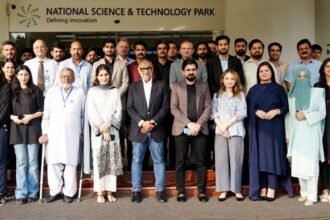Water is slipping through humanity’s grasp. Across the globe, dwindling freshwater supplies threaten livelihoods, food security, and peace itself. In Pakistan, the crisis is especially acute. A nation that once thrived on its rivers now faces a future where water scarcity could be its undoing. By 2025, the United Nations projects that Pakistan could run dry.
This stark warning is already manifesting. Farmers, who make up nearly 40% of Pakistan’s workforce, are witnessing crops wither due to erratic rains and unreliable irrigation. Urban centers face increasing water rationing, while rural areas contend with shortages that turn daily survival into an ordeal. The country stores water for only 30 days—a figure dwarfed by India’s 190 days and far below the global standard of 120 days.
For decades, policymakers have clung to the promise of mega-dams: towering structures capable of holding back entire rivers. Yet these projects, while impressive, are expensive and slow to materialize. Pakistan needs solutions that are faster, more affordable, and closer to the communities that suffer most. The answer may lie in something far smaller but no less impactful: small dams.
Small dams, often dismissed in favor of larger projects, represent a pragmatic, decentralized approach to water management. These compact structures capture rainwater, store it for later use, and prevent the catastrophic loss of freshwater that Pakistan experiences every monsoon. They are relatively inexpensive to build and maintain, making them an ideal solution for rural and semi-arid regions.
Their impact can be transformative. In the Potohar region of Pakistan, small dams have turned barren landscapes into thriving agricultural zones. Farmers who once relied on erratic rainfall now benefit from a stable water supply, ensuring both food security and economic growth. Similar successes abound globally. In India, small reservoirs have revitalized drought-stricken villages, turning them into agricultural powerhouses. China and Turkey have also integrated small dams into their water strategies, demonstrating their effectiveness at scale.
Critics argue that small dams cannot address Pakistan’s massive water needs. And it is true: no single solution can. Small dams are not a replacement for larger infrastructure but a complement to it. They address local needs efficiently, filling gaps that mega-dams cannot reach. Moreover, they are environmentally gentler, requiring less land and causing minimal disruption to ecosystems and communities.
Yet, the challenges cannot be ignored. Small dams require careful site selection, regular maintenance, and community involvement to remain effective. Without proper oversight, they risk becoming underutilized or falling into disrepair. However, these hurdles are far from insurmountable. With modern tools like GIS mapping, governments can identify optimal locations for these projects. Public-private partnerships can provide funding and expertise, while local communities can be trained to manage and maintain these dams sustainably.
The Quran, deeply revered in Pakistan, offers a profound reminder: “And We made from water every living thing” (Surah Al-Anbiya 21:30). This verse underscores the sacred nature of water, urging its conservation. Islamic teachings advocate against wastefulness, framing water management as both a moral and practical obligation. Small dams align with these values, embodying stewardship and sustainability.
But addressing Pakistan’s water crisis requires more than faith—it demands urgency. Climate change, population growth, and urbanization are compounding pressures on already strained resources. Inaction is not an option. By prioritizing small dams, Pakistan can not only mitigate immediate water shortages but also build resilience against the challenges of the future.
The global water crisis serves as a stark reminder of the need for innovative solutions. Pakistan’s struggle is not unique; it is emblematic of a broader challenge facing nations worldwide. As the world watches rivers run dry and aquifers deplete, small dams offer a glimpse of hope—not just for Pakistan, but for any country seeking to secure its future in a changing climate.
Water is life, but it is also finite. In saving it, Pakistan saves its people, its agriculture, and its very existence. The choice is no longer between action and inaction—it is between survival and collapse. Small dams may not be the only answer, but they are a vital step forward. The time to act is now.










